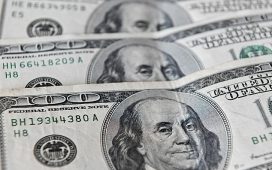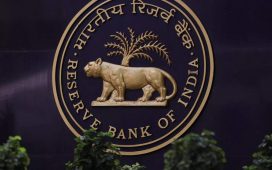Receive free Investments updates
We’ll send you a myFT Daily Digest email rounding up the latest Investments news every morning.
The writer is co-founder and co-chair of Oaktree Capital Management and author of ‘Mastering the Market Cycle: Getting the Odds on Your Side’
Understanding the distinction between risk control and risk avoidance is essential for investors. Investing, at its heart, consists of bearing uncertainty in the pursuit of attractive returns.
If you have real insight, certain risks can be borne prudently and profitably. Risk control therefore consists of declining to take risks that exceed the quantum you want to live with or those you aren’t well rewarded for bearing.
On the other hand, risk avoidance — or not doing anything where the outcome is uncertain and potentially negative — usually equates to return avoidance. The willingness to live with some losses is an essential ingredient of investment success. In short, there’s such a thing as the risk of taking too little risk.
One way to better understand this is by looking at tennis, which offers many apt comparisons to investing. As seen in this summer’s Grand Slam tournaments, tennis players have to take some risk if they hope to succeed. If none of your serves fall outside the service box, you’re probably playing too cautiously to win. But if you try for shots you can’t make consistently, you can beat yourself. The key is to have a favourable relationship between winners and losers. Neither maximising winners nor minimising losers is necessarily enough. It’s all in the balance.
The same is true of investing. When you aspire to returns well above those available on investment-grade bonds, it’s not enough to avoid losers; you actually have to find (or create) winners from time to time. But as you take more risk, not only will your expected return increase, but the range of possible outcomes will become wider and the bad possibilities will become worse. The widening of probability distributions as you move up the risk curve means that even the most successful investors are bound to have some losers along the way. The question is how many and how bad relative to their winners.
When trying to find the appropriate balance between seeking winners and avoiding losers, it’s important to remember that it’s not enough to have a strategy. You also need the skill to execute it. Tennis, once again, can help explain the larger implications here. In Charles Ellis’s article “The Loser’s Game,” published in The Financial Analysts Journal in 1975, he pointed out that there are two kinds of tennis games. Professionals play a winner’s game: they win by hitting winners. Since their game is so much within their control, they can usually produce the shots they want, the best of which win points.
But amateur tennis is a loser’s game: the winner is usually the person who hits the fewest losers. If you can just keep getting the ball over the net long enough, eventually your opponent will hit it off the court or into the net. The amateur doesn’t have to hit winners to win, and that’s a good thing, because he or she generally is incapable of doing so dependably.
This has clear parallels to investing. I’m convinced that some investors have alpha — the ability to earn above market returns through skill or achieving average returns without taking on all the typical risk of other investors. In other words, they can alter the shape of the probability distributions of their returns so that they’re not symmetrical — the portions representing the less desirable outcomes are smaller than those for the better ones.
Of course, even investors capable of generating alpha won’t have perfect records, just as the best tennis players still have unforced errors. The key is producing asymmetry — having more upside than downside.
Just as only a few people have the talent and determination to be professional tennis players, only a small number of investors can consistently generate alpha. Those who lack this ability shouldn’t expect to be able to consistently generate superior risk-adjusted returns. I believe they would be better off by focusing on remaining invested and keeping up with the indices, which have produced favourable long-term returns over the last century.
The few investors who do have the ability to generate alpha can do so either by reducing risk while sacrificing less return or by increasing potential return with a less-than-commensurate increase in risk. Almost no investors possess the ability to produce both forms of alpha.
The proper choice between these two approaches — fewer losers or more winners — depends on an investor’s skill, return aspiration, and risk tolerance. As with many things in investing, there’s no right answer here. Just a choice.










